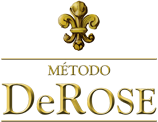Once, a famous dancer improvised a few instinctive movements. These movements however were extremely sophisticated, thanks to their virtuosity, and as a result, stunning. This body language was by no means ballet, but had undeniably been inspired by dance.
The breathtaking beauty of this technique moved those who witnessed its expressive nature. They asked the dancer to teach them his art. He did so. In the beginning the method had no name. It was something spontaneous which came from within, and which was echoed only in the hearts of those who had been born with the good fortune of having a more refined sensitivity.
The years went by, and the great dancer managed to impart a large part of his knowledge. Until one day, a long time afterward, the Master passed to the invisible plains. His art on the other hand did not die. The most loyal disciples preserved it intact and assumed the mission of passing it on. The pupils of this new generation understood the importance of also becoming instructors and not to modify or alter any of the teachings of the ingenious first mentor.
At some point in history this art gained the name integrity, integration, union: in Sanskrit: Yôga! Its founder joined the ranks of mythology with the name Shiva and with the title Natarája, king of the dancers.
These facts occurred more than five thousand years ago in the northwest of India, in the Indus valley, which was inhabited by the Dravidian people. And so, let us study the origins of Yôga of this period and find its original proposal so that we can identify authentic teaching and distinguish it from others, which were either compromised due to consumerism or to the inference of incompatible foreign forms.
Just as Yôga this admirable people also developed Tantra and Sámkhya. Their civilisation, one of the most advanced in ancient history, was lost and buried for thousands of years, until the end of the nineteenth century when archaeologists found evidence of their existence and started to excavate two important archaeological sites where they discovered the cities of Harappa and Mohenjo-Daro respectively. After this discovery, there were even more. Today there are thousands of sites distributed over an area larger than Egypt and Mesopotamia.
They were impressed with what they found. Cities with planned urban areas. Instead of tortuous alleys they found avenues up to forty-six feet wide, cutting through the city in the directions north south and east west. Between them pedestrian streets, upon which ox carts did not pass. On these streets the houses of the middle class had two floors, atriums, indoor sanitation and running water! Don’t forget that we are talking of a civilisation that flourished three thousand years before Christ.
It goes on. Streetlights, and covered sewers, children’s toys of which there were cars whose wheels turned, jointed cows heads and dolls with hair implants, there were also imposing barns which had an ingenious ventilation system and elevated platforms to facilitate the loading and unloading of carts.
In other cultures of the same period, the constructions of sovereign people were opulent palaces and majestic tombs, while at the same time the common folk remained in unsanitary dwellings. In the Dravidic culture it was the contrary. Common people lived well, whereas the architecture of public administration was stripped back.
Another curiosity was expressed by Gaston Courtiller in his book “Ancient Civilisations” Ferni editions page twenty four, when he declared “We are really impressed by the fact that in these deeply religious times we have not found temples or traces of statuaries which were the norm among civilisations during this period of ancient history, not even statuettes of worshippers in attitude of prayer of their deity”. For us this makes sense, after all, we know that in ancient India Sámkhya was in its moment of splendor. As well as this, in pre classic India Niríshwarasámkhya was an even stronger naturalistic variation than classic Sámkhya.
This society was identified as being matriarchal, which is also coherent with our sources, meaning that Yôga arose in a tantric culture.
With more digging the archaeologists discovered another city under the rubble of the first. To their surprise further down, they found another much older city. They digged even further and found yet another city underneath the last. And another. And another. What caught their attention was the fact that the deeper they went the more advanced the technology of the artefacts became, this was apparent in both the architecture and in the general tools. The archaeologists eventually hit a blanket of water and had to stop digging further. The question we have to ask ourselves is: how many other cities would there have been and how much more evolved would they have been.
It was from this civilisation that Yôga came to be. A civilisation both tantric (matriarchal) and sámkhya (naturalistic).
Around one and a half thousand years later, the Indus Valley Civilisation was invaded by a sub-barbarous race from Central Europe, the Aryans. According to current historical records, the Aryans subjugated the Dravidians, destroyed their civilisation, absorbed part of their culture, killed almost all of the defeated and enslaved the few that survived. Some managed to escape to South India and Sri Lanka, where their descendents live until this day, making up the Tamil ethnic group.
Yôga was a product of a civilisation free from warriors. It was naturalistic and matriarchal. From around 1500 B.C. a different people who were the total polar opposite of the Dravidians, absorbed Yôga into their culture, they were warriors, mystic and patriarchal. About one thousand two hundred years after the invasion (which is by no means a short period of time), Yôga was formally Aryanised by means of the celebrated work of Pantanjali, The Yôga Sutra. It was the commencement of a rereading of Yôga, which from then went on to be known as Darshana Yôga or Classic Yoga, which in itself propounded nothing less than the opposite behavioural proposal of Yôga in its true Dravidic origins. Dravidic Yôga was matriarchal, sensorial and non-repressive, expressed in one word it was tantric. This new Aryanised interpretation was patriarchal, anti-sensorial and repressive, in other words it was brahmáchárya.
The most interesting part of this process of misrepresentation is that if it was not for Pantanjali, Yôga would have disappeared from historical records. Thanks to him, an obviously well intentioned and wise man, today we are aware of the existence of his codification of Classic Yôga. The Aryans discriminated everything that was typically Dravidian due to its matriarchal traits as it was considered, by the strictly patriarchal Aryan society, as being subversive. Adapting Yôga to the realities of Aryan life, which was at this time enforced upon society, Patanjali managed to get the constituted powers at be, and wider society, to accept it. As a result this tradition was preserved and was able to arrive here into our lifetime.
During the middle ages Yôga suffered another grave deformation, when the great Master of Vedantic philosophy, Shankaráchárya, converted a large part of the population. This fact reflected itself in Yôga, because most Indians had become Vedantic, as a direct result. Therefore when practising, the general public and their leaders began to argue a spiritualistic format to Yôga, whose origins lay fundamentally in naturalistic Sámkhya philosophy and remained so even during the classic period.
In the twentieth century Yôga suffered yet another fraud. It was discovered by the west and…. westernised, obviously. It was turned into something useful and consumerist, something amorphous, ugly and dull.
Legitimate Yôga is stunning to watch, it is fascinating to practice and is excellent as a life philosophy. It is dynamic, strong and for young people. All of those whom visit us and watch a video presentation of the method are gobsmacked and all respond in the same way: they used to think that Yôga was something static to the point of requiring patience or was something supposedly suggested for old aged people. Honestly, if an old aged person attempted to practice real Yôga they would run the risk of blacking out. If they tried an unauthentic Yôga, the fruit of successive simplifications, accumulative adaptations and unscrupulous westernisations, well then it would not be worth calling this anomaly Yôga.
The problem is that a lot of people without an instructor’s certificate throw themselves into teaching, and because they do not have a large repertoire of techniques they end up taking a bit of gymnastics, quite a bit of esotericism, a pinch of hypnosis, some tai-chi lexicon and macrobiotic concepts mixing it all together with an atmosphere of alternative therapy and packaging it up to be consumed in a soft voice and accompanied with new age music. For the layman who hasn’t the least idea of what Yôga is, apart from perhaps a false stereotype, this implausible miscellaneous jumble satisfies him. Only, this mixture does not have even a single trace of Yôga.
We must not forget that the word Yôga means integrity. It is a requirement that its representatives have integrity. And so, in the following chapters you are going to have the satisfaction of getting to know a form of Yôga that is fascinating, stunning, extremely pleasant to practice and whose amount of results have the capacity to perplex anyone. It is SwáSthya Yôga, Pre Classic Yôga itself, pre-Aryan, pre-Vedic, proto-historical, the Yôga of Shiva, intact with all of its Tantric and Samkhya characteristics preserved. On top of this its execution, reminds us of a dance, rescued from the most remote layers of the collective unconscious.








